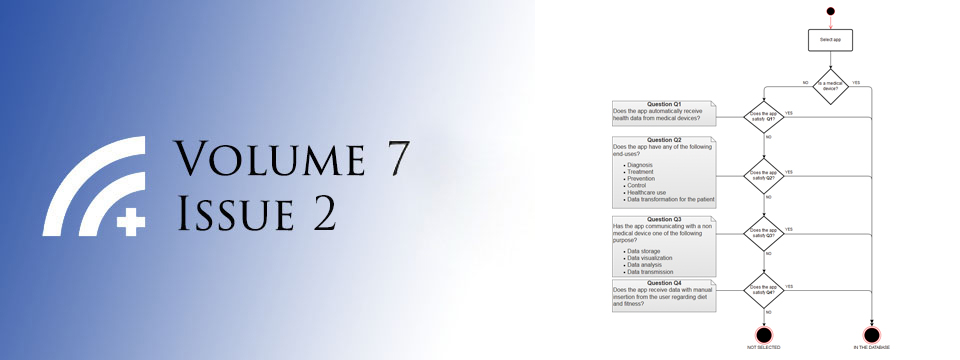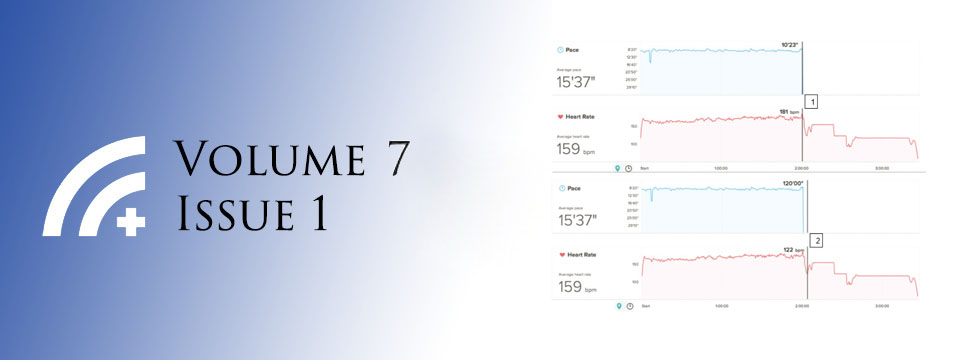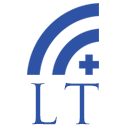Posted on Feb 28, 2014 in Editorial |
Rahul Chakrabarti, Chandrashan Perera
Journal MTM 3:1:1, 2014
doi:10.7309/jmtm.3.1.1
It is with great privilege that we welcome the third volume of the Journal with an issue that presents original research highlighting innovation and true practical advances in the role of smartphones in medical imaging.
Posted on Feb 28, 2014 in Original Article |
David Myung, MD, PhD1, Alexandre Jais, MS1, Lingmin He. MD, MS1, Mark S. Blumenkranz, MD1, Robert T. Chang, MD1
1Byers Eye Institute at Stanford, Stanford University School of Medicine, Stanford, California
Corresponding Author: viroptic@gmail.com
Journal MTM 3:1:9–15, 2014
doi:10.7309/jmtm.3.1.3
Obtaining a secure, photographic record of clinical findings during patient encounters can serve as a powerful adjunct to the otherwise text-heavy documentation that dominates modern electronic health record systems. This is particularly true in ophthalmology, which is one of several medical specialties that relies heavily on images for diagnosis and treatment. Conventionally, ophthalmic imaging has required expensive, tabletop units operated by a trained technician in an outpatient clinic setting. The ubiquity and evolution of smartphones into both high-resolution cameras and conduits for encrypted data transfer has the potential to change this; however, their use is inherently limited by the optics and lighting required to image the eye, and in particular, the retina. Here, we report the development of a lightweight, compact, user-friendly, 3D printed attachment enabling high quality fundus photos by coupling smartphones to indirect ophthalmoscopy condensing lenses. The attachment is designed to hold a specific lens at a prescribed but adjustable distance from the camera lens, can utilize either the phone’s native flash for lighting or another coaxial light source, and has the potential to be operated with one hand. Using both mechanical prototypes and subsequent 3D printed versions of the device, we were able to photodocument a variety of both normal and abnormal retinal findings.
Posted on Feb 28, 2014 in Original Article |
Reuben N. Robbins, PhD1, Henry Brown, BSc2, Andries Ehlers, BTech2, John A. Joska, MBChB, PhD3, Kevin G.F. Thomas, PhD4, Rhonda Burgess, MBA5, Desiree Byrd, PhD, ABPP-CN5, Susan Morgello, MD5
1HIV Center for Clinical and Behavioral Studies, Columbia University and the New York State Psychiatric Center, New York, New York; 2Envisage IT, Cape Town, South Africa; 3The Department of Psychiatry and Mental Health, University of Cape Town, Cape Town, South Africa; 4ASCENT Laboratory, Department of Psychology, University of Cape Town, Cape Town, South Africa; 5The Icahn School of Medicine at Mount Sinai, New York, New York
Corresponding author: rnr2110@columbia.edu
Journal MTM 3:1:23–36, 2014
doi:10.7309/jmtm.3.1.5
Background: Neurocognitive Impairment (NCI) is one of the most common complications of HIV-infection, and has serious medical and functional consequences. However, screening for it is not routine and NCI often goes undiagnosed. Screening for NCI in HIV disease faces numerous challenges, such as limited screening tests, the need for specialized equipment and apparatuses, and highly trained personnel to administer, score and interpret screening tests. To address these challenges, we developed a novel smartphone-based screening tool, NeuroScreen, to detect HIV-related NCI that includes an easy-to-use graphical user interface with ten highly automated neuropsychological tests.
Aims: To examine NeuroScreen’s: 1) acceptability among patients and different potential users; 2) test construct and criterion validity; and 3) sensitivity and specificity to detect NCI.
Methods: Fifty HIV+ individuals were administered a gold-standard neuropsychological test battery, designed to detect HIV-related NCI, and NeuroScreen. HIV+ test participants and eight potential provider-users of NeuroScreen were asked about its acceptability.
Results: There was a high level of acceptability of NeuroScreen by patients and potential provider-users. Moderate to high correlations between individual NeuroScreen tests and paper-and-pencil tests assessing the same cognitive domains were observed. NeuroScreen also demonstrated high sensitivity to detect NCI.
Conclusion: NeuroScreen, a highly automated, easy-to-use smartphone-based screening test to detect NCI among HIV patients and usable by a range of healthcare personnel could help make routine screening for HIV-related NCI feasible. While NeuroScreen demonstrated robust psychometric properties and acceptability, further testing with larger and less neurocognitively impaired samples is warranted.
Posted on Feb 28, 2014 in Original Article |
Kwee Choy Koh, MMed, MBBS1, Jun Kit Wan2, Sivasanggari Selvanathan2, Chithralekha Vivekananda2, Gan Yi Lee2, Chun Tau Ng2
1Senior lecturer, Department of Medicine, International Medical University, Seremban, Negeri Sembilan, Malaysia, and consultant infectious disease physician, Hospital Tuanku Ja’afar, Seremban, Negeri Sembilan, Malaysia; 23rd year undergraduate medical student, International Medical University, Seremban, Negeri Sembilan, Malaysia
Corresponding Author: kweechoy_koh@imu.edu.my
Journal MTM 3:1:46–53, 2014
doi:10.7309/jmtm.3.1.7
Background; Medical apps on smart devices are popular among medical students. However, the impact of medical apps on clinical practice is relatively less known.
Aims: To study the prevalence of medical app usage among medical students and assess its impact on clinical practice.
Method: One hundred fifty-five first year medical students of the International Medical University, Malaysia completed an anonymous questionnaire designed to explore demographic parameters, types of smart devices owned and the medical apps installed on the smart devices; and the frequency and purpose of usage of the apps. The students’ perception regarding medical apps, the impact of medical apps on clinical practice and the characteristics of an ideal medical app were explored.
Results: About 88% of medical students reported owning a smart device and 87.5% had medical apps installed on their smart devices. Most students reported positive perceptions towards medical apps and agreed they have positive impact on their studies and clinical practice. However, the medical students reported little awareness about the potential breach of patient confidentiality with the use of these apps.
Conclusion: There is high prevalence of smart devices and medical apps usage among first year clinical medical students with positive perception regarding its usage and impact on their clinical practice. Medical schools should encourage the use of medical apps among medical students with strategies put in place to safeguard patient confidentiality.
Posted on Feb 28, 2014 in Original Article |
Dr Gayan Padmasekara 1
1Monash Medical Centre, Melbourne, Australia
Journal MTM 3:1:37–45, 2014
doi:10.7309/jmtm.3.1.6
Background: Physical activity is an integral part of a healthy lifestyle. There are multiple barriers to exercise in the modern world. This combined with poor dietary behavior is a principle driver of obesity. Given the prevalence of mobile technology, especially among young adults, public health initiatives utilising fitness applications on smartphones offer an exciting new frontier in tackling this problem. However, there is a lack of evidence regarding the effectiveness of this mobile technology as a substitute to other exercise modalities.
Methods: In this pilot study, a search was performed using the Apple 4S smartphone’s “App Store” for relevant fitness applications (‘apps’). Three apps were found to fulfill the inclusion and exclusion criteria of the study: Nike Training Club, Instant Fitness and Gorilla Workout Free. Exercise was then performed as per each app’s guidance, and caloric expenditure was measured using a validated device. This caloric expenditure was then compared with the control exercises, which included slow-speed jogging, WiiFit Plus exercises, and RPM, an indoor gym cycling program. One subject performed three trials of each exercise modality.
Results: Jogging was the best form of exercise in regards to caloric expenditure (mean 7.9 calories/min), and was superior to all other groups. Nike Training Club was superior to Gorilla Workout Free app, however, there were no other significant differences between the apps. Nike Training Club and Instant Fitness apps were as effective as RPM and WiiFit Plus groups.
Conclusion: This pilot study showed that fitness apps are as effective as a gym cycling group class with regards to caloric expenditure per unit of time. They offer a new paradigm for exercise for individuals with barriers to participating in organised fitness activity. Smartphone technology has the potential to be utilised as a new tool for public health initiatives to tackle the growing obesity epidemic.
Posted on Feb 28, 2014 in Letter to the Editor |
Anum Wasim1, Madiha Hassan Rizvi1, Ayisha Farooq Khan1
15th year Medical Student, Dow Medical College, Karachi, Pakistan
Corresponding Author: anum.wasim5@gmail.com
doi:10.7309/jmtm.3.1.8
There has been a global rise in skin cancer over the last few years with the rising diagnosis of 2–3 million non-melanoma and 132,000 melanoma skin cancer cases each year1. This growing prevalence is not only attributed to the increasing ultraviolet radiation by ozone depletion but also by other major predisposing factors centred to an individual’s own responsibility controls like recreational sun exposure and sunburn1. However despite the escalating figures, low skin screening rates and awareness levels among the general population are highly disconcerting2.










